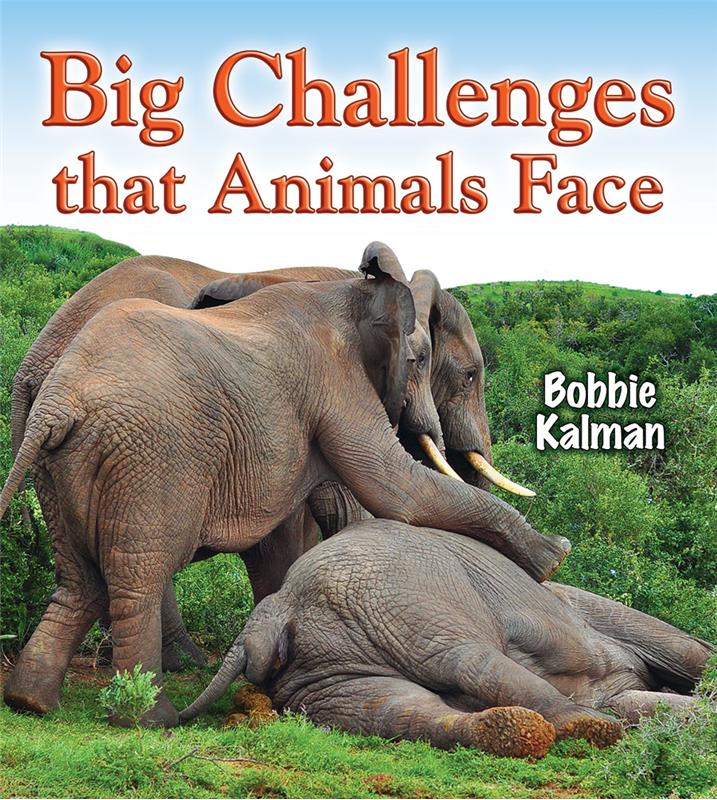| ________________
CM . . .
. Volume XXII Number 35. . . .May 13, 2016
excerpt:
These four titles have recently been added to the “Big Science Ideas” series which now numbers 22 titles. Averaging 15 chapters each, the books provide general information that is suitable for the target audience, and they include a table of contents, a glossary and an index. One of the titles also provides a brief list of websites for further research. The text is printed in a large, simple font with plenty of white space around it, while text boxes and well-labelled photographs offer additional information. There are occasional question boxes interspersed throughout the text, some of them containing matching questions, and others inviting readers to think about possible solutions to problems facing animals in the wild today. Illustrations consist mainly of vibrant colour photographs. There is nothing new in these titles. All of the information contained within them is readily available in other books, even in books by the same author, and several of the illustrations are repeats as well. Animals That Live in Social Groups briefly explains the reasons why some animals live in groups as well as the various configurations of those groups. Elephants, for example, live in herds of five to 50 members ruled by a matriarch, and there are no male adults in the herd, while a wolf pack is led by an alpha male and female and consists of several generations of wolves. Other animals featured in this title include, among others, dolphins, penguins, lions and prairie dogs. Activities such as communication and hunting are covered. Animals in the wild are being threatened by habitat loss, pollution, poaching, over-fishing, climate change, human diseases, the trapping of exotic animals to be sold as pets, and the introduction of non-native species to their environments. Even tourism affects animals. For instance, orcas and dophins are captured to perform in aquatic shows while sea turtles, accustomed to heading toward the ocean reflecting the bright sky, instead become confused by the bright lights of beach hotels and crawl in the opposite direction. Endemic island animals are in particular danger as, when they die, they will not be found in any other place in the world. Other topics included in Big Challenges That Animals Face are breeding and recovery programs that have been successful in increasing the numbers of some endangered animals. Invasive Animal Species focuses on animals that have been introduced by people, sometimes by accident and other times intentionally, into ecosystems in which the animals do not belong. Successful invasive animals are those that are able to thrive and adapt to many different habitats and have few, if any, natural predators. One example is the Burmese python whose numbers have greatly increased in recent years and threaten the wildlife in Florida. Another example is the mongoose, which was introduced to Hawaii and the Caribbean islands to control the rats that were eating the sugar crops. But the problem was that rats are nocturnal while mongooses are active during the day, and so the experiment failed. The introduction of an invasive species to a habitat causes, among other things, food scarcity, damage to the environment and to food chains, the destruction of bird eggs, and the spread of diseases. In the case of zebra mussels, the damage that they cause to pipelines is in the billions of dollars. In Symbiosis: How Different Animals Relate, readers will learn about the four main types of symbiosis: mutualism (where both species benefit), commensalism (where one species benefits but neither helps nor harms the other species), parasitism (where one species benefits while harming the other), and predation (the predator benefits). Several examples of each type of symbiosis are given. The terms scavengers, detrivores and decomposers are also introduced. Young readers might be surprised to find out that bacteria live in symbiotic relationships with people. For instance, probiotics, live bacteria, help to move food quickly through the body. The concepts in this title are, perhaps, a little more difficult for readers to grasp. Generally, a good series, with some varying degree of difficulty among the titles. Recommended. Gail Hamilton is a retired teacher-librarian in Winnipeg, MB.
To comment on this title or this review, send mail to cm@umanitoba.ca.
Copyright © the Manitoba Library Association. Reproduction for personal use is permitted only if this copyright notice is maintained. Any
other reproduction is prohibited without permission.
CM Home |
Next Review |
Table of Contents for This Issue -May 13, 2016
| Back Issues | Search | CM Archive
| Profiles Archive |



